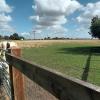Access best practice guides for farming practices to protect water bodies HERE.
Water is an important nexus for agriculture, with a large number of organisations and stakeholders having a shared interested in the objective of achieving consistent clean water sources.
The interplay between agriculture and clean water is a complex and crucial relationship that highlights both challenges and opportunities:
-
Water Source Contamination: Agriculture can impact water quality through the runoff of fertilizers, pesticides, and manure into nearby water bodies. This contamination poses risks to aquatic ecosystems and the availability of clean water for communities.
-
Erosion Control: Effective soil and water conservation practices in agriculture, such as contour farming and cover cropping, can reduce soil erosion. This, in turn, prevents sedimentation in rivers and lakes, helping to maintain clean water quality.
-
Irrigation Efficiency: Agriculture is a major water user, especially in regions with limited water resources. Implementing efficient irrigation methods, like drip irrigation, reduces water wastage, conserving this precious resource.
-
Wetland Preservation: Wetlands play a crucial role in filtering pollutants from agricultural runoff. Protecting and restoring wetland ecosystems can enhance water quality and serve as natural buffers against contamination.
-
Nutrient Management: Careful management of nutrient application in agriculture can prevent excess nitrogen and phosphorus from entering water bodies, which can cause harmful algal blooms and "dead zones." Precision farming techniques help optimize nutrient use.
-
Buffer Zones: Planting buffer strips of vegetation along waterways can trap pollutants and prevent them from reaching streams and rivers, improving water quality while providing habitat for wildlife.
-
Water Recycling: Some agricultural operations employ water recycling systems to reduce the discharge of contaminated water and conserve resources.
-
Aquaculture and Integrated Farming: Combining aquaculture (fish farming) with agriculture in integrated farming systems can help recycle nutrients and reduce the environmental impact of both sectors on water quality.
-
Regulations and Best Practices: Governments and organizations often set regulations and promote best management practices to minimize the negative impact of agriculture on water quality. Farmers are encouraged to adopt these guidelines voluntarily.
-
Research and Innovation: Ongoing research and technological advancements in agriculture aim to develop more sustainable practices that minimize water pollution while maintaining agricultural productivity.
In summary, the interplay between agriculture and clean water is a delicate balance. While agriculture can pose challenges to water quality, it also offers opportunities for positive change. By implementing sustainable practices, improving efficiency, and working in harmony with the environment, agriculture can play a significant role in preserving and enhancing clean water resources for current and future generations.
Please click 'Ask to Join' if you would like to add or edit information on this page.











